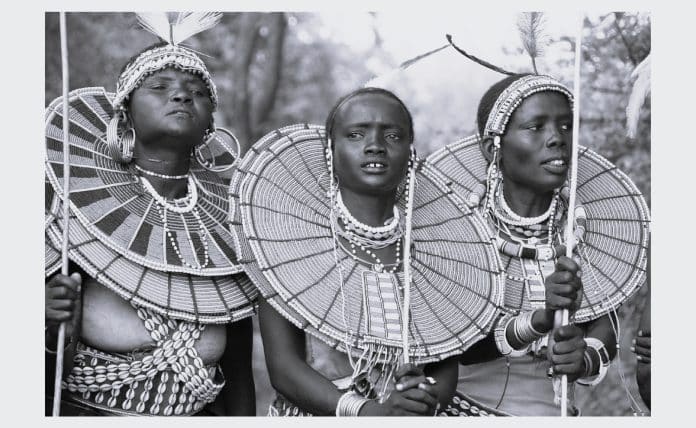Exploring the Vibrant Cultural Tapestry of Tanzania: A Journey into the Heart of Africa
Embark on a captivating journey through the breathtaking landscapes and diverse cultural tapestry of Tanzania, a land that encapsulates the soul of Africa. From the iconic plains of the Serengeti to the mystical peaks of Mount Kilimanjaro, Tanzania Arica culture offers a kaleidoscope of experiences that will leave you spellbound. Immerse yourself in the vibrant Maasai culture and witness their traditional rituals that have remained unchanged for centuries. Explore the ancient ruins of Kilwa Kisiwani and uncover the fascinating history of the Swahili coast. Indulge in the flavors of Zanzibar’s spice markets and get lost in the labyrinthine streets of Stone Town, a UNESCO World Heritage Site.
As you traverse this enchanting country, you will encounter an abundance of wildlife, from elephants and lions in the Ngorongoro Crater to chimpanzees in the Gombe Stream National Park. Tanzania is a haven for nature lovers and adventure enthusiasts alike, offering thrilling activities such as wildlife safaris, hot air balloon rides, and trekking expeditions.
Get ready to be captivated by the awe-inspiring beauty and culture of Tanzania Africa.
Traditional tribes and their customs
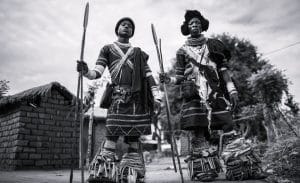
The culture in Tanzania Africa is steeped in the many tribes and customs of the people. Home to a multitude of traditional tribes, each with its own unique customs and traditions. One such tribe is the Maasai, known for their vibrant red clothing and intricate beadwork. The Maasai people have a deep connection to their land and livestock, and their traditional way of life revolves around cattle herding. Visitors have the opportunity to visit Maasai villages and gain insight into their daily routines, traditional dances, and rituals.
Another prominent tribe in Tanzania is the Chagga tribe, residing near the slopes of Mount Kilimanjaro. The Chagga people are known for their exceptional farming skills, and they practice a form of agriculture called terracing, which allows them to cultivate crops on steep mountain slopes. Their traditional houses, made of banana leaves and bamboo, are a testament to their resourcefulness and sustainable living.
The Hadzabe tribe, one of the last remaining hunter-gatherer tribes in Africa, provides a fascinating glimpse into Tanzania’s ancient past. The Hadzabe people rely on hunting and gathering for their survival and have managed to preserve their traditional way of life despite external influences. Spending time with the Hadzabe tribe offers a unique opportunity to witness their hunting techniques, traditional dances, and ceremonies.
These traditional tribes and their customs are an integral part of Tanzania’s cultural tapestry, and getting to know them firsthand is a truly enriching experience.
Music and dance traditions in Tanzania

Tanzania’s music and dance traditions are as diverse as its landscape. Traditional Tanzanian music is characterized by rhythmic beats, melodic vocals, and a wide range of instruments such as drums, xylophones, and stringed instruments like the kora. The music often tells stories and reflects the daily lives and cultural values of the Tanzanian people.
One of the most famous music styles in Tanzania is Bongo Flava, a fusion of hip-hop, reggae, and traditional Tanzanian melodies. Bongo Flava has gained international recognition and has become a symbol of Tanzanian youth culture. Artists like Diamond Platnumz and Ali Kiba have achieved global success, putting Tanzanian music on the map.
Dance is also an integral part of Tanzanian culture, with each tribe having its own unique dance style and costumes. The Maasai, for example, are known for their energetic jumping dances, while the Makonde tribe showcases intricate footwork and acrobatic movements. Traditional dances often accompany special occasions, such as weddings, harvest festivals, and coming-of-age ceremonies.
Attending a traditional Tanzanian music and dance performance is a mesmerizing experience that will leave you tapping your feet and swaying to the rhythm and unique culture of Tanzania Africa.
Cuisine and culinary traditions
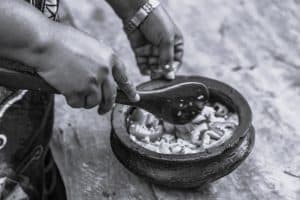
The culture of Tanzania Africa is incomplete without the Tanzanian cuisine. The unique cuisine is a delicious blend of flavors and influences from various cultures, including Arab, Indian, and African. Staple foods in Tanzania include ugali (a cornmeal porridge), nyama choma (grilled meat), and pilau (spiced rice). These dishes are often accompanied by a variety of vegetables, such as sukuma wiki (collard greens) and mchicha (spinach).
One of Tanzania’s most famous dishes is the mouthwatering Zanzibar pizza. This unique street food originated in Stone Town and is made by filling a thin dough with a combination of meats, vegetables, and spices, then folding it into a square and frying it until golden brown. The result is a culinary delight that will satisfy even the most discerning foodie.
Tanzania is also known for its vibrant spice markets, particularly in Zanzibar. The island’s history as a spice trading hub has left a lasting impact on its cuisine. Visitors can explore the bustling markets, where vendors sell a wide range of spices like cinnamon, cardamom, and cloves. The aromatic flavors of these spices infuse Tanzanian dishes, creating a sensory experience like no other.
Indulging in Tanzanian cuisine is not only a treat for your taste buds but also an opportunity to savor the Tanzania Africa culture.
Art and craftsmanship in Tanzania
Tanzania’s art and craftsmanship are a testament to the creativity and skill of its people. Traditional Tanzanian art often reflects the country’s wildlife, landscapes, and cultural traditions. One of the most renowned forms of Tanzanian art is Tingatinga painting, characterized by its bright colors, bold patterns, and depictions of animals. These vibrant paintings have gained international recognition and can be found in art galleries and markets throughout Tanzania.
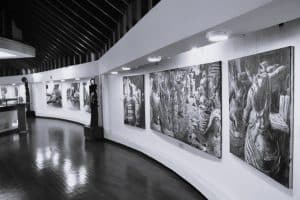
Wood carving is another popular form of craftsmanship in Tanzania. Skilled artisans carve intricate designs into ebony and mahogany wood, creating beautiful sculptures, masks, and furniture. These pieces often depict animals, ancestral spirits, or scenes from everyday life, and they make for unique souvenirs that embody Tanzanian culture.
Basket weaving is yet another traditional craft in Tanzania, with each region having its own distinctive style and patterns. The baskets are made from natural materials such as grass, sisal, or palm leaves, and are used for various purposes, from storing food to carrying goods. The intricate weaving techniques passed down through generations make each basket a work of art.
Exploring the art and craftsmanship scene offers a glimpse into the culture in Tanzania Africa.
Festivals and celebrations
The culture of Tanzania Africa is filled with vibrant festivals and celebrations, where people come together to honor their cultural traditions and showcase their heritage. One of the most famous festivals in Tanzania is the Mwaka Kogwa, celebrated by the Zanzibar people. This four-day festival marks the beginning of the Swahili New Year and includes traditional dances, music performances, and the famous stick fighting ceremony.
The Ngorongoro Maasai Cultural Festival is another highlight, offering visitors a chance to immerse themselves in Maasai culture. This annual festival showcases traditional Maasai dances, rituals, and ceremonies, providing a deeper understanding of their way of life.
Tanzania’s diverse religious landscape is also reflected in its celebrations. Eid al-Fitr, marking the end of Ramadan, is a major celebration for the Muslim community in Tanzania. The colorful processions, feasts, and prayers bring communities together in a joyous celebration of faith.
Attending these festivals and celebrations allows visitors to witness the vibrant spirit and strong sense of community that permeate Tanzanian culture.
Cultural tourism in Tanzania
Tanzania has recognized the value of its cultural heritage and the potential it holds for tourism. Cultural tourism initiatives have been developed to provide visitors with immersive experiences that showcase Tanzania’s rich traditions and foster a deeper appreciation for its cultural diversity.
One such initiative is the Cultural Tourism Program in the village of Mto wa Mbu. Here, visitors can engage with local communities, participate in traditional activities such as farming and cooking, and learn about the customs and traditions of the diverse tribes in the area. The program also offers guided tours of nearby attractions, including Lake Manyara National Park and the Great Rift Valley.
In Bagamoyo, a town with a rich history as a trading port, cultural tourism initiatives aim to preserve and promote the town’s cultural heritage. Visitors can explore historical sites, visit local art studios, and experience traditional dances and music performances.
These cultural tourism initiatives not only provide economic opportunities for local communities but also contribute to the preservation and promotion of Tanzania’s cultural heritage.
Preserving and promoting Tanzania’s cultural heritage
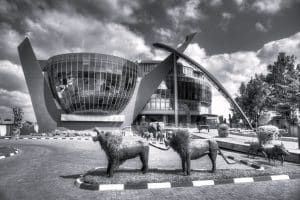
Preserving and promoting Tanzania’s cultural heritage is crucial to ensuring its survival for future generations. Organizations and initiatives have been established to safeguard Tanzania’s cultural treasures and raise awareness about their significance.
The National Museum of Tanzania, located in Dar es Salaam, houses a vast collection of artifacts, artworks, and archaeological finds that showcase Tanzania’s rich cultural history. The museum offers educational programs and exhibitions that highlight the importance of preserving and understanding cultural heritage.
The Zanzibar Stone Town Heritage Society is dedicated to the preservation of Stone Town’s UNESCO World Heritage Site status. The society works to protect the architectural integrity of the town and promotes sustainable tourism practices that respect its cultural heritage.
Local communities also play a vital role in preserving Tanzanian culture. By actively participating in cultural tourism initiatives and passing down traditions to younger generations, they ensure that their customs and way of life continue to thrive.
Impact of tourism on Tanzanian culture
While tourism brings economic opportunities and exposure to the culture in Tanzania Africa, it also poses challenges to preserving cultural traditions. The influx of tourists can sometimes lead to the commodification and commercialization of cultural practices, diluting their authenticity.
It is essential for both visitors and the tourism industry to approach cultural tourism with respect and sensitivity. This includes supporting local communities, engaging in responsible tourism practices, and seeking authentic experiences that prioritize cultural exchange over mere observation.
By embracing sustainable tourism practices and fostering a deeper understanding and appreciation for Tanzanian culture, we can ensure that tourism has a positive impact on the preservation and promotion of Tanzania’s cultural heritage.
Embracing the cultural richness of Tanzania
The culture of Tanzania Africa is a testament to the country’s rich history, diverse tribes, and vibrant traditions. From the traditional rituals of the Maasai to the pulsating rhythms of Bongo Flava, Tanzania offers a kaleidoscope of experiences that will leave you captivated.
As you explore this enchanting land, immerse yourself in the customs, music, cuisine, art, and festivals that define Tanzanian culture. Engage with local communities, support cultural tourism initiatives, and approach your travels with respect and sensitivity.
By embracing the cultural richness of Tanzania, we can forge meaningful connections, foster cross-cultural understanding, and contribute to the preservation and promotion of this remarkable destination. So, pack your bags and embark on a journey into the heart of Africa, where the vibrant cultural tapestry of Tanzania awaits.
For more articles related to Tanzania culture, click here!
























